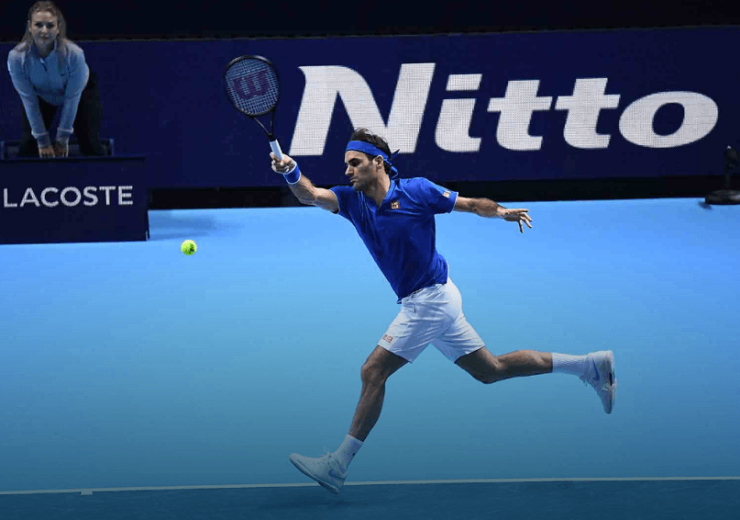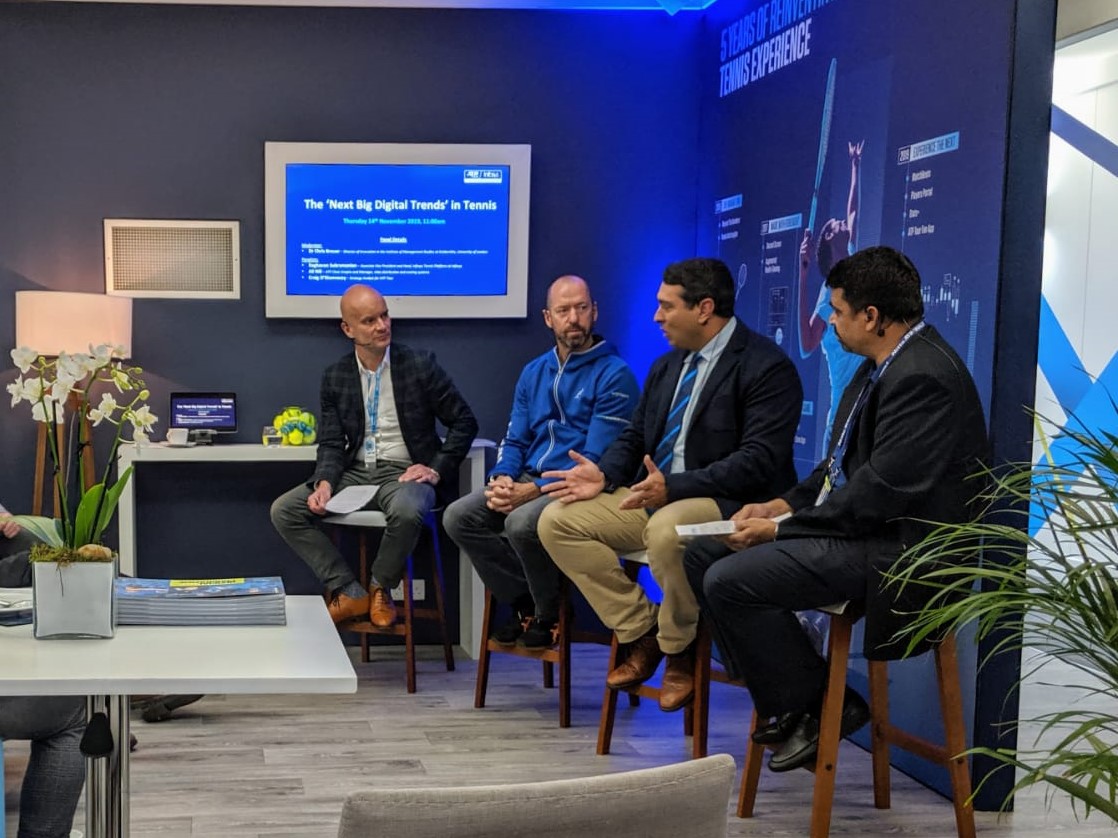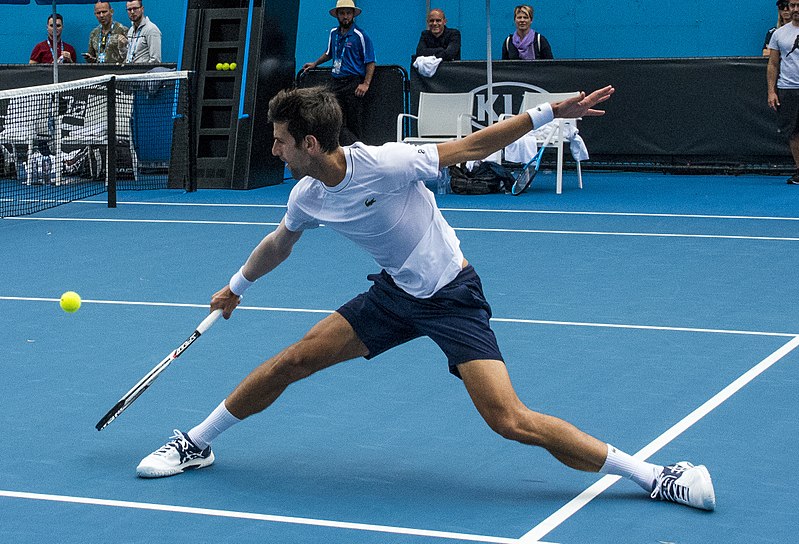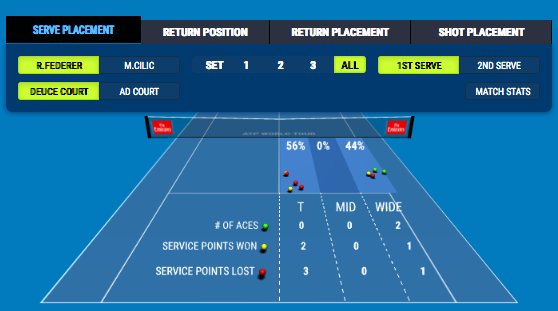One tennis technology expert at Infosys believes we could yet see Novak Djokovic or Rafael Nadal up against a robot on court

Roger Federer in his first match of the 2018 Nitto ATP World Tour Finals
Data analytics and technology are transforming the way tennis coaches, umpires and fans appreciate the sport. At the ATP finals in London a panel of experts, led by the competition’s technology partner Infosys, discussed the ways that tech is changing tennis.
Across industries, data is driving decision making – from targeted advertising to new product launches.
But outside of business, the world of tennis is also realising the potential of data to change the way the sport is taught, trained and marketed.
Craig O’Shannessy, coach to Novak Djokovic and Italian eighth seed Matteo Berrettini, claims that data has changed the way that coaches operate and believes that, while it may appear random, tennis is a game of repeatable patterns.
“Before 1991 we weren’t counting anything – we didn’t have analytics,” he says.
“As a younger coach I would go to coaches conferences and, in a room of 100 coaches, you would get 100 different opinions.
“The technology that we’re now using is a huge deal for tennis coaches because we now know what matters most.”

According to O’Shannessy’s data analysis, the first four shots of a point are the most important to a match – during 2017 Roland Garros Men’s tournament the most important factor in determining a winner was the number of points won in the first four hits with an 89% correlation.
He now takes this approach to training, focusing on the serves and returns rather than the long rallies, and, essentially, admits to ignoring anything past that fourth shot.
“Data is driving the coaching through shots one to four and I go to great depths to know everything that happens on the serve, the return and the third and fourth shots.
“It’s all about keeping it simple and interpreting what matters most to winning.”
How data analytics has changed Novak Djokovic’s training regime
O’Shannessy takes a “Moneyball” approach, bringing the data strategy employed by the Oakland A’s baseball team during its 2002 league-winning season, to tennis.
When training Djokovic, he splits the service boxes up and demarcates the base-line with the letters A to D.
“The player should be aiming to hit a different area depending on where the shot is hit and where their opponent is. The data can tell us, very specifically, which area is best,” he says.
“I want to know if Djokovic serves out wide, whether it’s likely to come back to position C and whether the return should be hit with a backhand or a forehand.
“You could argue that he has one of the best backhands in the world. But there are certain parts of the court where it is statistically more advantageous to hit a forehand.”
Those at the top of the sport are always looking for new ways to gain the upper hand over their opponents, meaning that many players have been receptive to the insights provided by O’Shannessy.

“When I first went to Djokovic, I told him I had a lot of data so asked him which bits he wanted to see, and he asked to see everything.
“As one of the elite-level players in our sport, he is always looking for an edge.”
But not all players are the same.
“Djokovic has more of an analytical mind, so I can get a little bit more granular with the details,” O’Shannessy adds.
“With Berrettini I would not deliver the analytics before a match because he learns better from video.
“But I think that over time he’ll become more and more receptive to it.”
Tennis technology changing officiating
Umpires have also benefited from the introduction of new technologies that help them to make the correct calls on the court.
Ali Nili, a chair umpire for the ATP event, claims that the sport has always been a leader in embracing technology and exploring tech innovation.
“We’ve been very open to innovation – we were one of the first sports that had live scoring,” he says.
“When I’m sitting in the chair and click 15-love, that’s when your phone updates and internet updates to apps and everywhere.”

He believes that the umpire’s goal should be to go through a match without making a bad call, and technology is one of the ways that they can reach this aim.
But there are other considerations to be made: “The only debate is over the implications of it once you introduce it — what is it going to do to the fan experience, there are people that think technology will sterilise the game or that it will destroy officiating.”
Nili points to Hawk-Eye as evidence of technology being introduced to a sport successfully, and claims that “the tech highlights the people who do a good job”.
“Now you see that a lot of major sports are trying to adopt it and embracing technology too.”
Innovation in the fan experience
It’s not just coaches who are benefiting from new methods of statistical analysis, it is also changing the fan experience.
Infosys, which has been a technology partner to the ATP for five years, has introduced Second Screen, which brings together all of the umpire and ball-tracking data to provide live insights for fans.
Data analysis is also present in other new features introduced by Infosys, including Rally Analysis and the Players and Coaches Portal, which “slices up” the match into points and puts together playlists categorised by the different types of points played.
Raghavan Subramanian, associate vice president with Infosys and leader of the 25-person tennis team, says: “Our point-by-point analysis will allow fans to see the manner in which a game unfolded rather than just the score.
“They will be able to see where the aces were served, where the break points were won and was it a hard-fought game.”

Another area that Infosys is looking into is IoT, which could bring “an extra dimension to data analysis in tennis”.
Subramanian explains: “There are certain manufacturers who have used IoT to find out whether a player is hitting the ball in the sweet spot.
“It can also tell what spin the player was able to generate on the ball and how fast they are able to hit it.
“It provides a fantastic fan experience, for any amateur tennis player to compare themselves to the top players on the TV.
“But in a in a match situation that becomes another fantastic valuable source of information to be able to derive insights from and share strategy for the players.”
Could we eventually see robots on the tennis court?
Subramanian believes that innovation is currently coming from all directions, in terms of the fan experience, player performance and match officiating.
Looking to the future, one development that could incorporate all three is the advent of robot tennis.
Although, this may sound like a far-fetched idea, Subramanian claims that there are some precedents including chess grandmasters testing their wits against machines and the AI systems competing in the US TV gameshow Jeopardy.
“The natural First transition will not be two robots playing against each other, but one robot possibly playing against the best player out there,” he says.
“There are a lot of important questions to be answered first – should we make the robots capable of running 100kmph or jumping 20 feet.
“At that point you will find that the robot is capable of returning every ball and is impossible to lob and it will have too much of an unfair advantage.”
But before anyone gets excited at the prospect of a match between Roger Federer and and a titanium tennis machine, Nili took the opportunity to emphasise the importance of the human players.
“At the ATP, we are most proud of our athletes – it’s our athletes, which make the tennis exciting,” he says.
“Being a human being, we compare themselves to us and how fast, strong or technical their play is — we’re fascinated by the things that they’re able to achieve and that’s the number one attraction for anyone who comes and watches tennis.
“Everything else is secondary, including the data and technology, because that only serves to make our athletes more appealing.”


